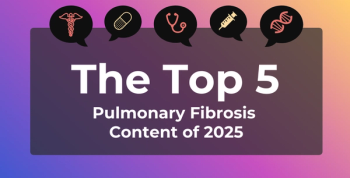
"Data Nerd" Niall Brennan Showcases HCCI Changes to NJ Policy Makers
Niall Brennan, president of the Health Care Cost Institute (HCCI) and former CMS data chief, compared examples of national trends in spending, price, and utilization with the same trends in New Jersey to illustrate the power of data in a recent discussion with Garden State policy makers about data and transparency.
Niall Brennan, president of the Health Care Cost Institute (HCCI) and former CMS data chief, surveyed a crowd in Princeton, New Jersey, recently after comparing national trends in emergency room spending, price, and utilization with the same trends in the Garden State.
Brennan, a self-described “data nerd,” was speaking at the New Jersey Health Care Quality Institute winter conference called “Getting to Affordability­—Is Data and Transparency the Answer?”
“We’re having a conversation about affordability, we’re having a conversation about value-based care, everybody’s saying the right thing, and prices are going up 120%; so, something’s not adding up for me here, personally,” said Brennan.
Brennan took over HCCI this summer after leaving CMS at the end of 2016. HCCI is an independent, nonpartisan research organization that analyzes the causes of the rise in health spending. Its dataset currently totals about 100 million lives, including data from both Medicare and employer sponsored insurance (ESI).
During the Obama administration, Brennan revolutionized how CMS used data. Since joining HCCI, he is doing the same thing by making data more “faster paced and relevant.” Brennan showed the New Jersey audience of policy makers, healthcare providers, politicians, and others how HCCI works with media organizations to illustrate the impact of its data by combining both data and “anec-data” to better inform the public about the crisis in spiraling healthcare costs.
In one example, HCCI examined the 5 Current Procedural Terminology (CPT) codes for an emergency room (ER) visit, which range from the lowest severity and complexity to the highest level of severity and complexity. By examining the codes HCCI was able to explore how spending, utilization, and prices for ER visits have changed from 2009 to 2015.
Spending per member on all ER visits increased 85% between 2009 and 2015, largely due to the more than 100% growth in spending on high severity cases. Price increases drove ER spending growth.
While overall use of the ER remained constant, there was a significant shift in case mix from low- to high-severity visits.
“Between 2009 and 2015 ER visits remained flat, but over the same time period patients were more likely to be coded with high severity codes, resulting in higher prices,” said Brennan. "The really interesting thing is that price increased very dramatically across all types of ER services, with the results that the spending on this one slice of little but important part of healthcare rose by what I would say pretty stratospherically over that time period.”
New Jersey's spending on the highest severity codes were higher than the national average (128% vs 118%).
In another example, he showed data for Medicare vs ESI spending. There are very different patterns of geographic variation in spending per capita. Low-cost Medicare states don’t necessarily have low costs in the ESI population. Again, national figures differed from New Jersey, a state with a high cost of living and a high concentration of healthcare providers and facilities, which had above-average spending on the commercially insured and very high Medicare spending.
In addition, from 2012 to 2015, healthcare spending in New Jersey averaged 14% more than national spending. Two categories were markedly higher than the rest of the country: professional procedures (30% higher) and prescription drugs (24% higher).
“Healthcare was such a data-free zone for so many years and in many respects continues to be despite the infusion of federal dollars in electronic health records, which in many respects doesn't produce usable data,” he said.
Transparency is a trickier subject, Brennan noted, and he said his feelings on the subject have evolved. He explained that when doctors talk about transparency they are often worried about what information is presented about their quality or how it will impact their careers.
However, he said “the weakest actor in the healthcare system is always the patient” because of “financial reasons and information asymmetry reasons.”
“We’ve tried for 20 years to bend the cost curve and we’re basically out of ideas, now we’re going to rely on transparency and say to patients, hey patients this is completely on you, that is completely unacceptable and is in fact victim blaming,” he said.
HCCI recently launched its own consumer tool powered by its own claims data called
Newsletter
Stay ahead of policy, cost, and value—subscribe to AJMC for expert insights at the intersection of clinical care and health economics.







































